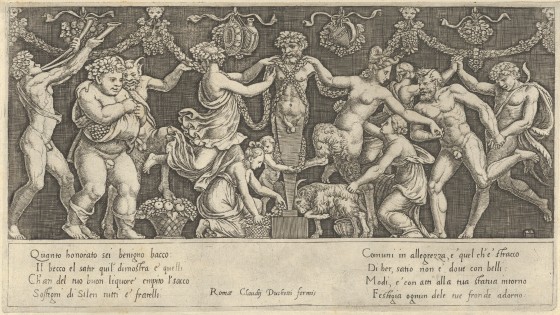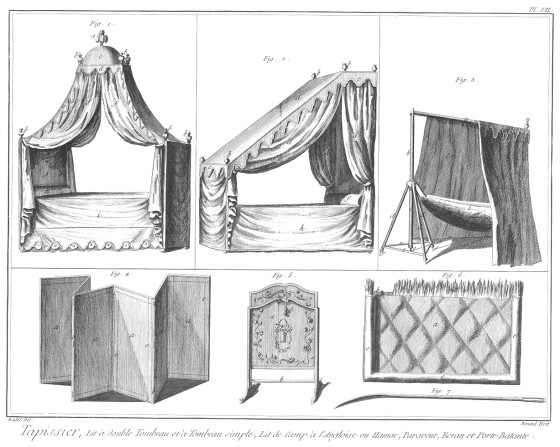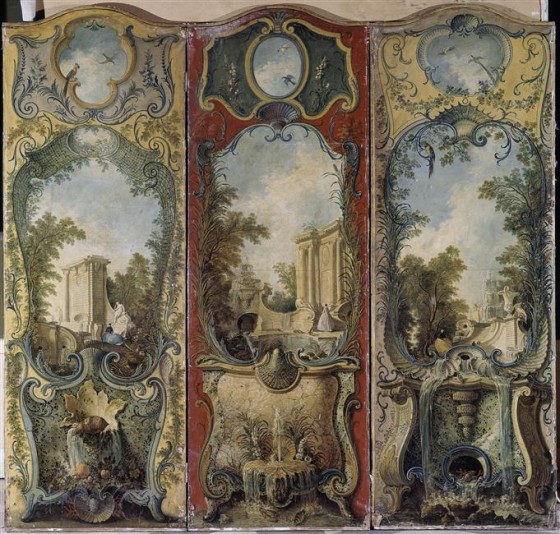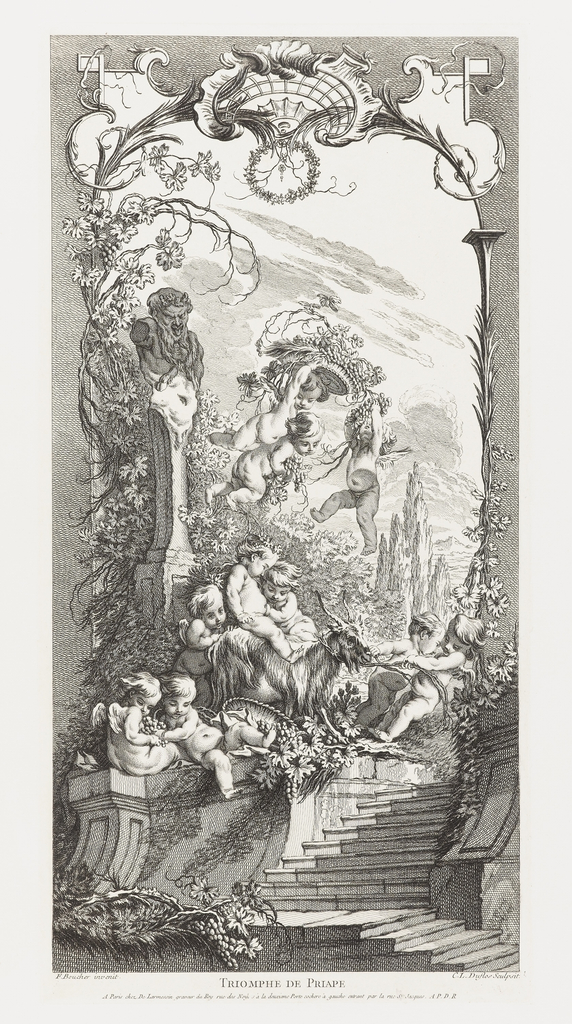This is a design for a panel for a folding screen by the prolific French painter, designer and academician François Boucher. Titled, “The Triumph of Priapus,” it was etched and engraved as part of a suite of folding screen designs. This publication, which was titled Nouveaux Morceaux pour des paravents, included four other designs titled, “Rococo,” “Rural homage,” “Léda,” and the “Triumph of Pomona.” All of the prints are part of the Cooper Hewitt collection.
The composition is anchored by two flights of stairs leading into an Italian garden populated with cypress trees. Numerous putti frolic across the landscape. A group of three is flying with a cornucopia while another three putti ride a goat, with a pair mischievously pulling on its horns. On the balustrade, two putti play with flowers and berries. This energetic scene is overseen by an upright term with a satyr head that serves as a stand-in for Priapus, the Greek god of the vegetable garden, the vine, goats, bees, and male virility. Native to the ancient Greek city of Lampsacus on Hellespont, Priapus was worshiped on the fields where goats and sheep pastured. While the god is not directly featured in the composition, Boucher has left behind clues of his presence such as the bundle of grapes in the foreground, which is a reference to Priapus’ parentage as the offspring of Dionysus and Aphrodite. Vines, berries, and floral trelliswork merge into a border, which is topped by a shell motif. An engraving from the sixteenth-century shows a sacrifice of a ram to Priapus, who is once more represented as a term.

Print, Speculum Romane Magnificentiae: Sacrifice to Priapus, 16th century; Master of the Die, published by Antonio Lafreri and Claudio Duchetti, possibly after Giulio Romano or Raphael; Engraving; 25.5 x 30.6 cm; The Metropolitan Museum of Art, New York; Harris Brisbane Dick Fund, 1941, Inv. no. 41.72(2.150)
While the origin of the folding screen can be traced back to fourth-century BC China, the furniture type entered European visual culture at the end of the sixteenth century through Dutch and Portuguese trading activities in Japan. Boosted by the visit of the Siamese Ambassadors to Versailles in 1686, folding screens became an integral part of interior furnishings in France. They quickly became part of the meuble, a suite of upholstered furniture often in the same fabric— a set that included beds, curtains, fire screens, wall hangings, and a range of seat furniture. An illustration under the section on upholstery in the Diderot and d’Alembert’s Encyclopédie includes a folding screen.

Engraving, Tapestry Work: Double and single bed, English-style camp bed or hammock, folding screen, screen, and door padding, 17th century; Plate 7 in Denis Diderot and Jean le Rond d’Alembert, Encyclopédie ou Dictionnaire raisonné des sciences, des arts et des métiers, vol 9 (plates), Paris, 1771.
These screens were both ornamental and practical and were placed in most rooms, from bedrooms to dining rooms to grand salons. Folding screens were upholstered with Savonnerie, Beauvais or Gobelin tapestry, domestic or imported painted paper, Coromandel and Japanese lacquer, silk, or even needlework. Boucher’s designs, although probably not realized, would have likely been executed as painted paper mounted on canvas in the manner of Lajoüe, or they could have been woven in tapestry like the designs of Claude Audran.
In the eighteenth-century, French artists such as Antoine Watteau, Nicolas Lancret, Jacques de Lajoüe, and Jean-Baptiste Oudry all designed folding screen panels. A comparison can be made to Lajoüe’s six-leaved folding screen at the Petit Palais, in which rustic fête galante themes arranged together with floral and nautical themes in a composition comparable to Boucher’s “Léda,”panel.

Six-leaved folding screen (Detail of three leaves), ca. 1735; Jacques de Lajoüe, Wood and Oil paint on canvas, Paris, Petit Palais, musée des Beaux-Arts de la Ville de Paris; Inv.Dut.874
Boucher’s folding screen designs are prime examples of his artistic vocabulary as they combine allegorical themes, overabundance of putti, and rustic visual puns. His folding screen compositions thus unveil an important facet to Boucher’s ornamental production in which pastoral and allegorical themes were explored in service of interior design.
Cabelle Ahn is a graduate intern in the Department of Drawings, Prints and Graphic Design at the Cooper Hewitt, Smithsonian Design Museum. She received her MA in Art History from the Courtauld Institute of Art and is currently studying eighteenth century decorative arts at the Bard Graduate Center.
